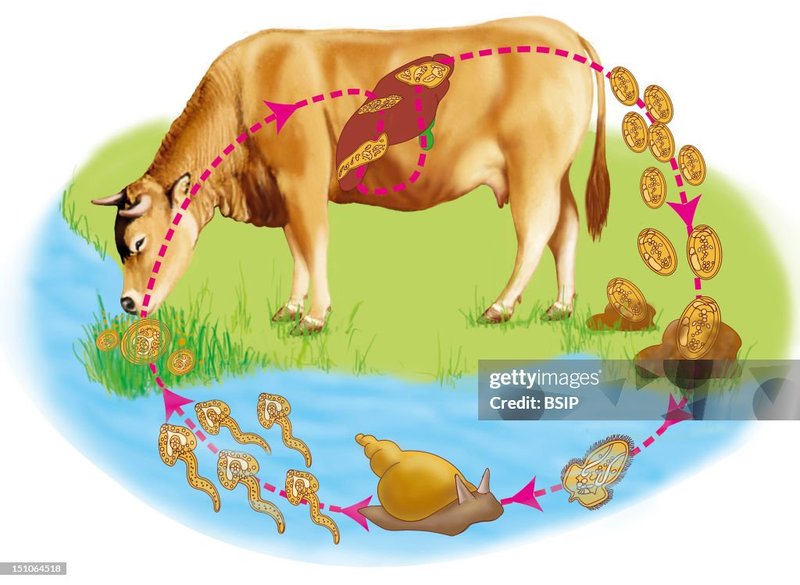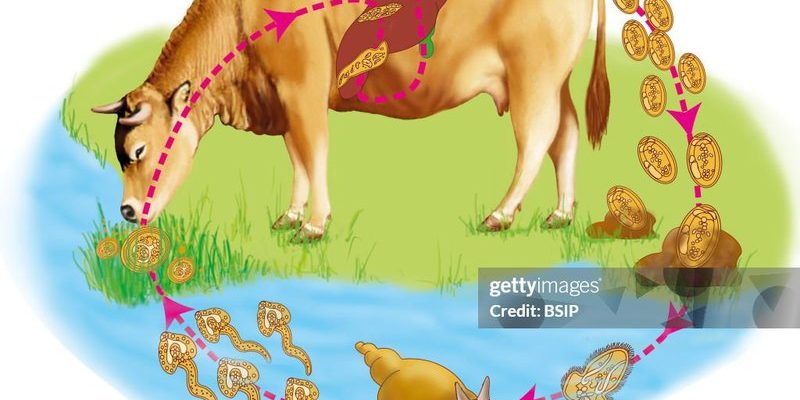
Now, you might be wondering about the specifics. How exactly do liver flukes fit into their ecosystems? And what does this mean for the animals and plants around them? While they’re primarily known for affecting grazing animals like sheep and cattle, their influence stretches much further than that. Let’s untangle this web of ecological interactions together.
Understanding Liver Flukes
Liver flukes are flatworms that primarily inhabit the livers of various mammals, including livestock, deer, and sometimes even humans. Their life cycle is a fascinating journey that starts in water. Here’s how it works:
- Adult flukes live in the liver and produce eggs.
- These eggs are excreted and hatch into larvae in the water.
- Larvae then infect snails, which acts as intermediate hosts.
- After maturing, these larvae leave the snail and can infect grazing animals.
Honestly, their life cycle is a bit like a twisted tale of survival. While they might seem harmless at first glance, their presence can spark significant ecological changes.
Ecological Benefits of Liver Fluke Populations
Liver flukes, like many organisms, can offer some ecological benefits despite their reputation. Here’s a look at a few positive impacts they may have:
1. Nutrient Cycling
Liver flukes contribute to the nutrient cycle, especially in wetland areas. When they consume nutrients from their host’s liver, they help recycle these nutrients back into the ecosystem. This process supports various plants and other organisms that rely on these nutrients for growth.
2. Predator-Prey Dynamics
Liver flukes can influence predator-prey relationships. For example, animals that are infected with liver flukes may become weaker or more vulnerable to predators. This dynamic can help maintain balance within an ecosystem by ensuring that only the strongest individuals survive. Think of it as nature’s way of encouraging healthy populations.
3. Biodiversity
The presence of liver flukes can foster biodiversity in specific ecosystems. They serve as food for certain predators like birds and rodents, introducing more species into the food web. This interdependence among species can enhance ecosystem resilience, allowing it to adapt better to changes.
Drawbacks of Liver Fluke Populations
While liver flukes have their perks, they also come with downsides. Here’s a closer look at some of the challenges they present:
1. Impact on Livestock Health
Liver flukes are notorious for affecting livestock health. Infected animals can experience weight loss, decreased milk production, and even death in severe cases. This not only impacts the animals themselves but also poses economic challenges for farmers. Imagine a farmer losing their livelihood because of a tiny parasite—it’s a tough situation.
2. Disease Transmission
Liver flukes can act as vectors for other diseases. When animals are infected, it makes them more susceptible to other pathogens, leading to a cascade of health issues. This not only affects individual animals but can also lead to larger outbreaks within herds, which is a nightmare for livestock operators.
3. Ecosystem Disruption
Infection levels can fluctuate, potentially leading to ecosystem imbalances. A spike in liver fluke populations can cause declines in host species, disrupting the food chain. This disruption can ripple through the ecosystem, leading to unexpected consequences for other wildlife and plant life.
Management Strategies for Liver Fluke Populations
Let’s talk about how we can manage liver fluke populations to minimize their drawbacks while still acknowledging their benefits. Here are a few strategies that can be effective:
1. Grazing Management
Implementing controlled grazing practices can help reduce liver fluke populations. By rotating grazing areas, farmers can limit the exposure of livestock to contaminated pastures. This method not only protects animal health but also helps maintain pasture quality.
2. Targeted Treatments
Using medication strategically can help control liver fluke infections in livestock. When treatments are applied during peak infection seasons, farmers can significantly reduce the impact of flukes on their animals. However, it’s essential to use these treatments judiciously to prevent resistance.
3. Habitat Management
Maintaining the environment where liver flukes thrive is critical. By managing wetland areas and minimizing stagnant water, the lifecycle of liver flukes can be disrupted. This can involve simple measures like improving drainage or controlling snail populations.
Research and Future Directions
Research on liver fluke populations is ongoing, with scientists exploring new ways to understand their ecological role better. Here are a few areas of interest:
1. Host-Parasite Interactions
Understanding the relationship between liver flukes and their hosts can provide insight into how to manage infections better. Researchers are examining how different environmental factors influence these interactions, which can lead to improved control measures.
2. Climate Change Impacts
As our climate changes, the habitats and life cycles of liver flukes may evolve. Studying these changes will help predict future outbreaks and their ecological consequences. It’s crucial for both agriculture and wildlife conservation efforts.
3. Integrated Pest Management
Integrating liver fluke management with other pest control strategies could lead to more sustainable practices. By considering the ecological role of liver flukes, we can develop approaches that balance livestock health with ecosystem integrity.
Liver flukes are more than just parasites—they’re complex players in the ecosystems they inhabit. While they offer some ecological benefits, such as nutrient cycling and promoting biodiversity, their drawbacks, particularly in livestock health, are significant concerns. By understanding their role better, we can work towards management strategies that help balance the scales. After all, in the intricate web of life, even the smallest creatures can have a mighty impact. As we continue to study these fascinating flukes, we can find ways to foster healthier ecosystems for all beings.

